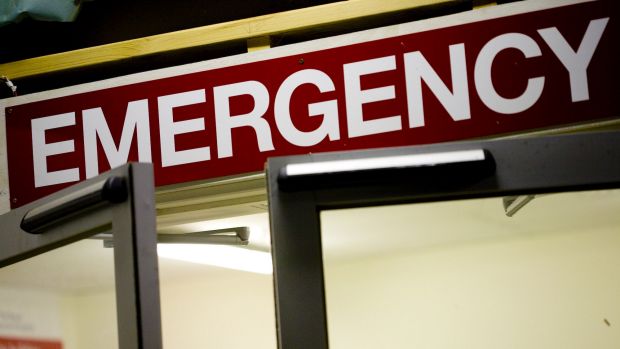
The NSW health system has been under pressure to lift its performance, with only 69 per cent of patients meeting the four-hour target in the most recent Bureau of Health Information figures.
Overstretched emergency departments are meeting their performance targets by creating annexes where the usual rule for patients to be treated within four hours does not apply.
The areas – known as Short Stay Units – are intended for patients who need to be under longer observation, to free up beds in the main department for acute patients.
But they have also raised concerns that hospitals are using them to circumvent the national benchmark for 90 per cent of patients to remain in the emergency department no longer than four hours.
The NSW health system has been under pressure to lift its performance, with only 69 per cent of patients meeting the four-hour target in the most recent Bureau of Health Information figures.
An emergency physician at one hospital said short stay units were a good initiative in principle because they gave emergency departments a more rapid turnover.
“It’s not harming the patients and it’s not necessarily gaming,” the physician said.
“But it means that the apparent improvement is to some extent a reorganisation of people and numbers.”
Since the federal government introduced the four-hour target in 2012, the number of NSW hospitals with short stay units has risen from 22 to 29, with some of the greatest improvements occurring in those that introduced them.
Coffs Harbour Hospital cleared fewer than half its emergency patients within four hours before it introduced a short stay unit, rising to nearly three quarters in the latest statistics.
Mona Vale Hospital improved its clearance rate by 20 percentage points.
Bankstown Hospital recorded an improvement of 14 percentage points in a single quarter after it began staffing its short stay unit in 2013.
Labor health spokesman Walt Secord said the units undermined the veracity of the government’s data on emergency department treatment times.
“This calls into question all of the government’s claims about meeting emergency department targets,” Mr Secord said.
“I think it’s absolutely duplicitous of the government to set up second-level emergency departments just to get around benchmarks.”
But NSW Health Systems Relationship director Luke Worth said short stay units were one of several strategies to improve patient flow and were monitored to ensure they were not abused.
These strategies had led to many more people accessing timely care than previously.
“We’ve probably filled the Sydney Cricket Ground almost eight times over in terms of people who now get their treatment and care in an ED within four hours, compared to two years ago,” he said.
Health Minister Jillian Skinner said thousands of patients were benefiting.
“Short stay units represent world’s best practice because they recognise not all patients have the same degree of critical need,” Ms Skinner said.
“Labor’s comments show it has no clue what is good for patients or the broader health system.”
NSW Health issued a policy directive to hospitals in November reminding them that short stay units are intended only for patients who are anticipated to need observation for a maximum of 24 hours.
“[Short stay units] are not a temporary ED overflow area nor used to keep admitted patients who are solely awaiting an inpatient bed nor awaiting treatment in the ED prior to medical assessment,” the directive said.
The Australasian College of Emergency Medicine’s immediate past president Sally McCarthy said short stay units generally provided good quality of care to appropriately selected patients, but no more than 15 per cent of emergency patients should be sent there.
“They’re not supposed to be used as holding bays for people who are known to need admission into the hospital wards,” Dr McCarthy said.
“Certainly on occasions in NSW, certain hospitals have admitted too many people to the short stay unit, which means they’re using it as a way of pretending they’re more efficient than they are.”
The federal government tied $15.8 million to a sliding annual benchmark for the proportion of patients cleared from the Emergency Department within four hours.
The funding was removed in the July budget, but the benchmark remains.
